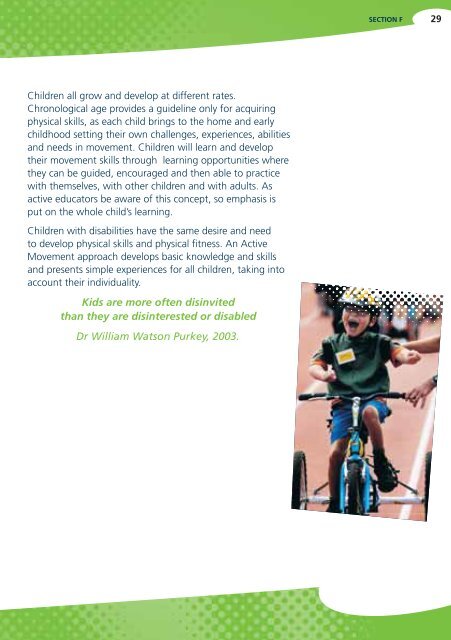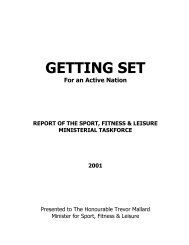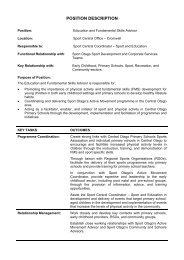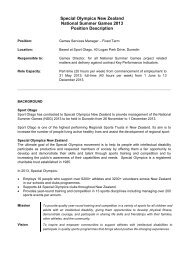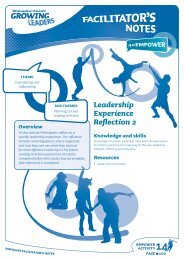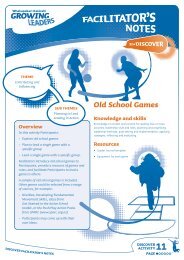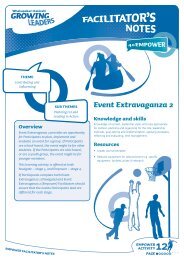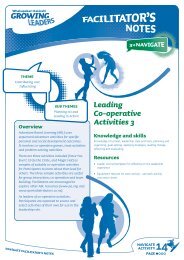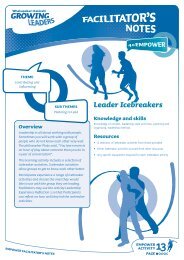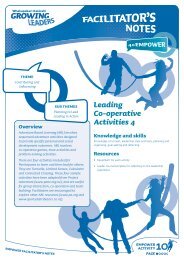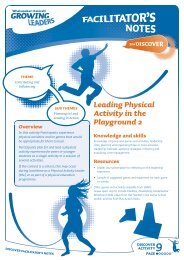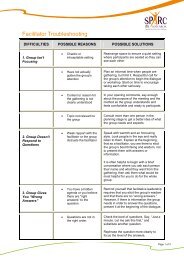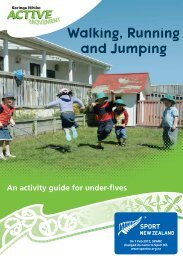An Introduction to Active Movement Koringa Hihiko - Sport New ...
An Introduction to Active Movement Koringa Hihiko - Sport New ...
An Introduction to Active Movement Koringa Hihiko - Sport New ...
You also want an ePaper? Increase the reach of your titles
YUMPU automatically turns print PDFs into web optimized ePapers that Google loves.
SECTION F<br />
29<br />
Children all grow and develop at different rates.<br />
Chronological age provides a guideline only for acquiring<br />
physical skills, as each child brings <strong>to</strong> the home and early<br />
childhood setting their own challenges, experiences, abilities<br />
and needs in movement. Children will learn and develop<br />
their movement skills through learning opportunities where<br />
they can be guided, encouraged and then able <strong>to</strong> practice<br />
with themselves, with other children and with adults. As<br />
active educa<strong>to</strong>rs be aware of this concept, so emphasis is<br />
put on the whole child’s learning.<br />
Children with disabilities have the same desire and need<br />
<strong>to</strong> develop physical skills and physical fitness. <strong>An</strong> <strong>Active</strong><br />
<strong>Movement</strong> approach develops basic knowledge and skills<br />
and presents simple experiences for all children, taking in<strong>to</strong><br />
account their individuality.<br />
Kids are more often disinvited<br />
than they are disinterested or disabled<br />
Dr William Watson Purkey, 2003.


